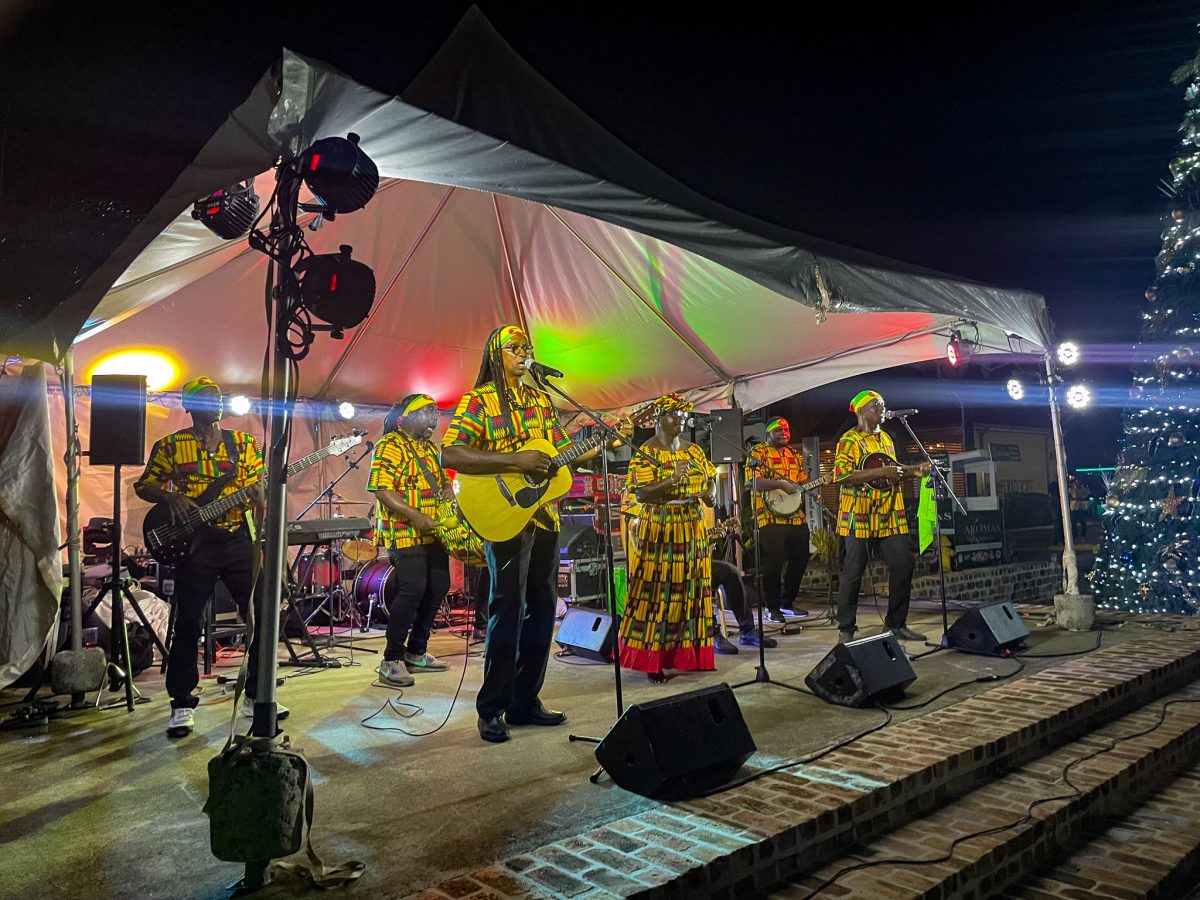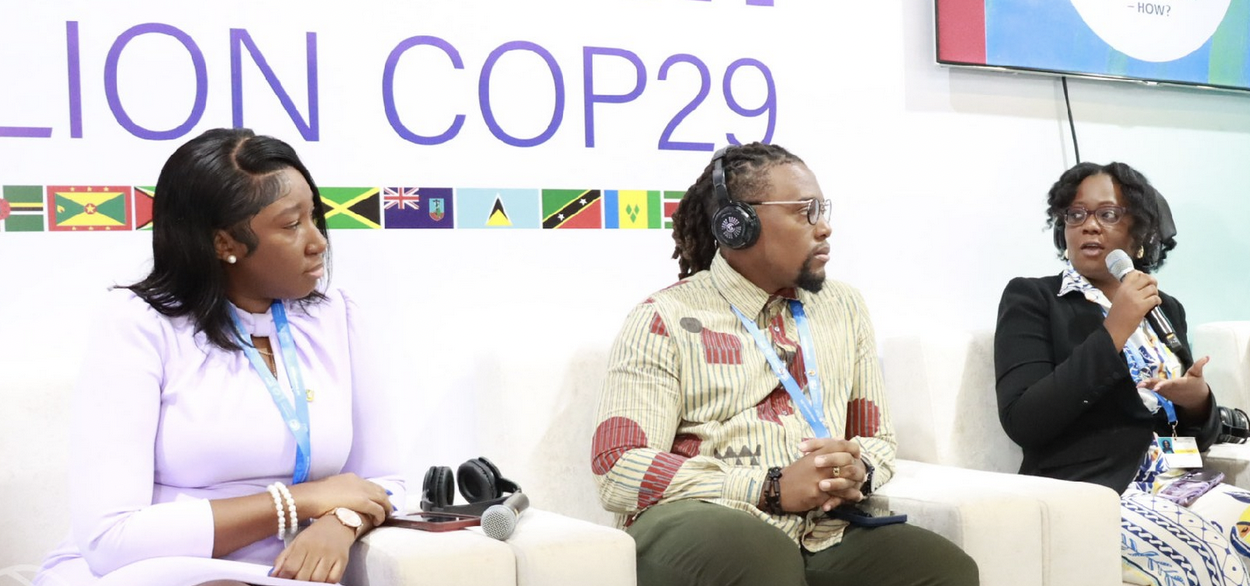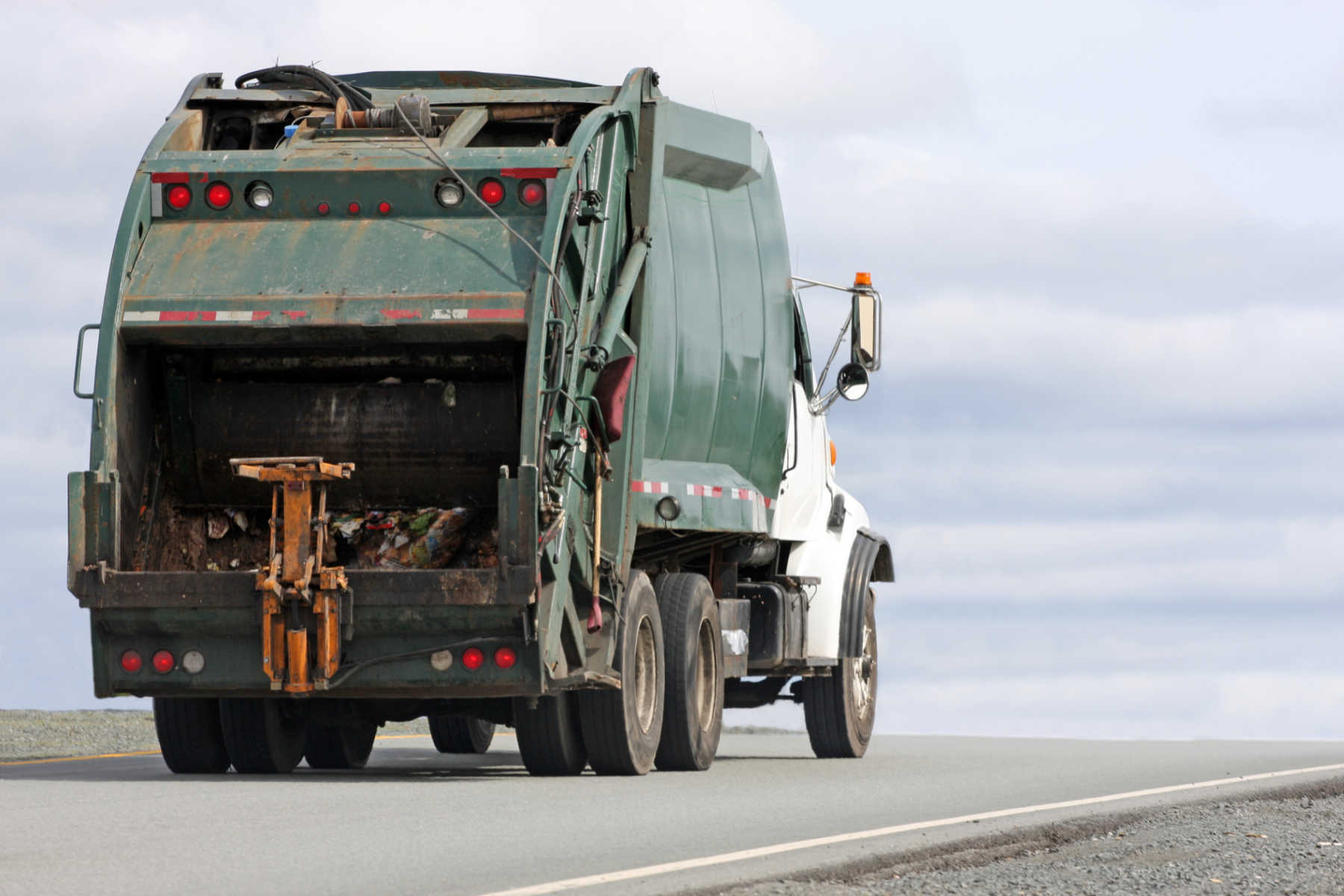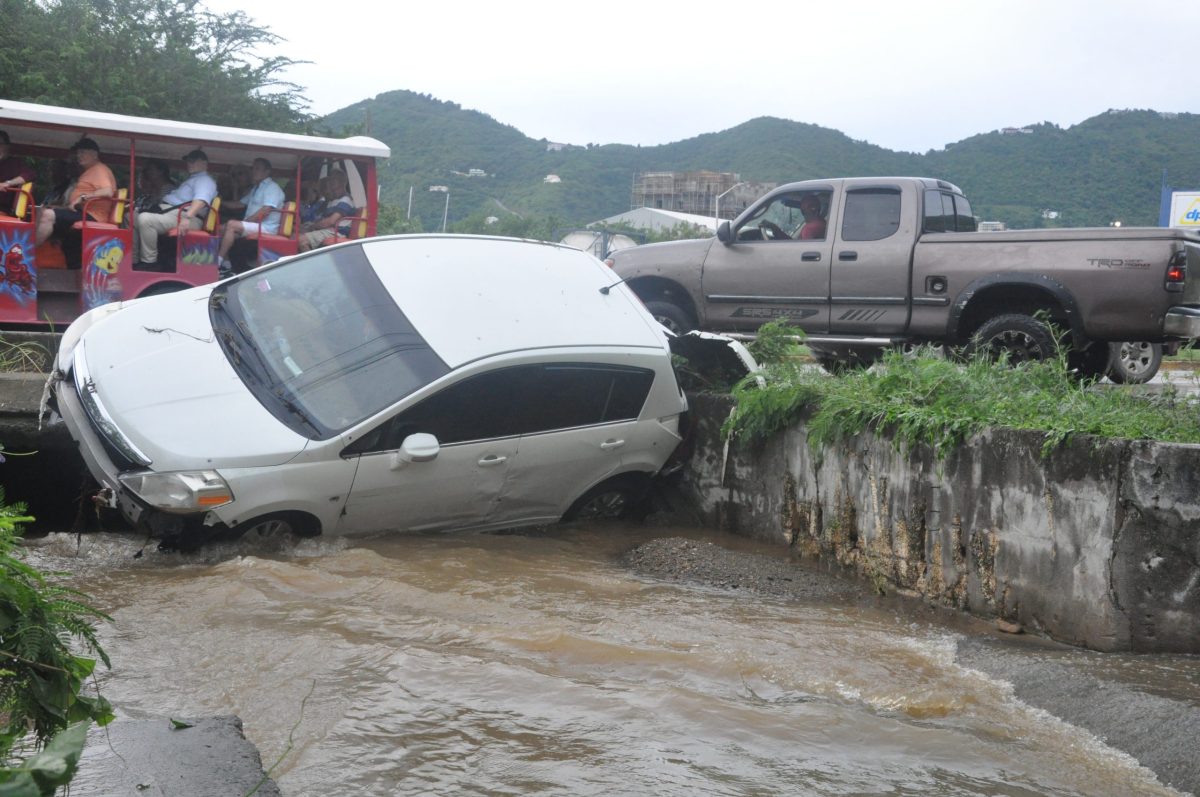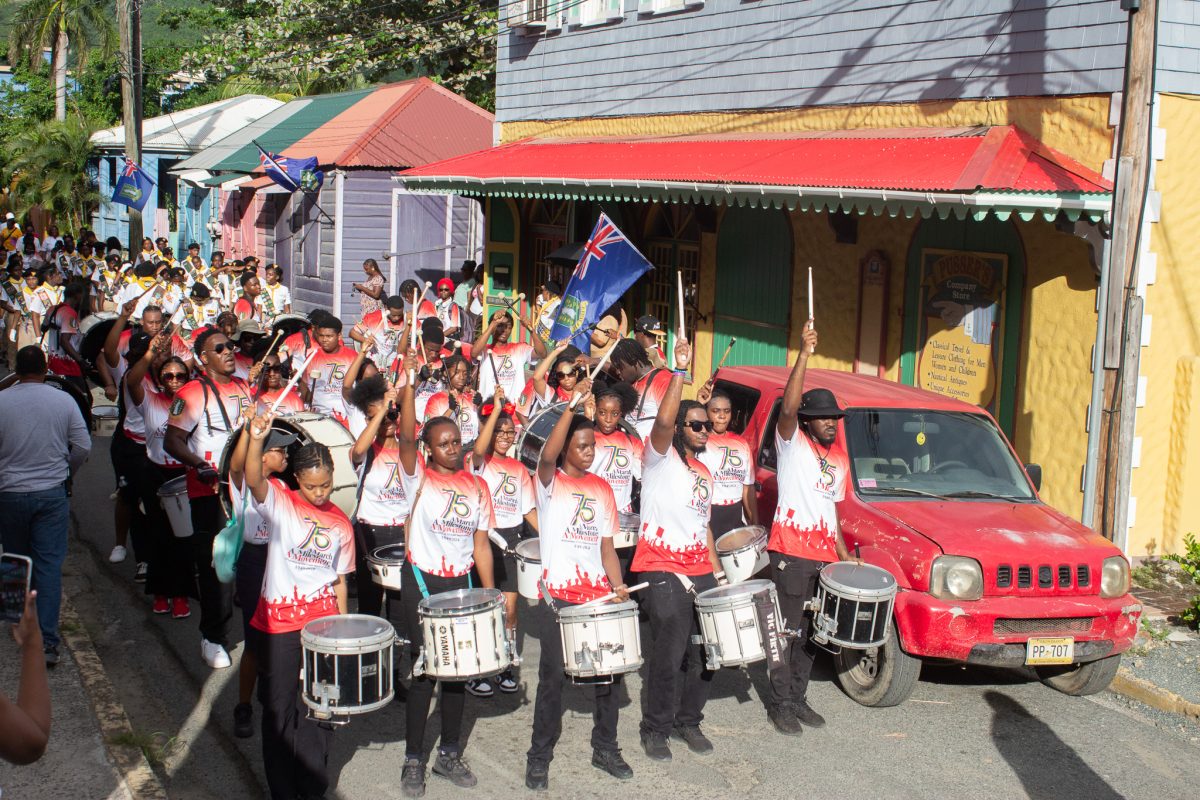

Hundreds of residents marched down Main Street on Sunday afternoon, following in the footsteps of some 1,500 protestors who took the same route 75 years earlier to demand greater political autonomy for the territory.
The Great March of Nov. 24, 1949 — led by Theodolph Faulkner, Isaac Fonseca and Carlton de Castro, who were named national heroes last year — led to the restoration of the Legislative Council in 1950.
“It was the flame that lit the path to further constitutional, political, economic and social development during the latter half of the 20th Century,” Government Information Officer Giovanni Herbert said during a programme that followed the Sunday re-enactment at Sir Olva Georges Plaza.
As part of his presentation, Mr. Herbert recounted the lead-up to the 1949 march, when Mr. Faulkner “ranted and raved” at meetings in Road Town’s marketplace over what he considered poor treatment of his ill wife on Anegada.
Related unrest culminated in the protest, where residents marched through the capital to deliver a petition to then-commissioner J.A.C. Cruikshank demanding “a measure of political freedom.”
In addition, Mr. Herbert said, the marchers aimed to register “displeasure with the commissioner and how he was administering the Virgin Islands colony and request his removal.”
1,000 people
On Sunday, Premier Natalio “Sowande” Wheatley told the Beacon that the 1949 protest marked the “beginning of the modern Virgin Islands.”
“Everybody rallied together, because in the history of the Virgin Islands, progress is not without struggle,” he said, adding, “Courageous men and women stood up on our behalf, not just for them to see an improvement in their living conditions, but for coming generations.”
More than 900 people registered to participate in the Sunday event, and Premier’s Office Permanent Secretary Carolyn Stoutt-Igwe said she believes at least 1,000 took part.
“We wanted to do a ceremonial march where we invited as many schools, organisations — traditional as well as non-traditional — to come and join us for this event,” Ms. Stoutt-Igwe said.
She added that Anegada, Jost Van Dyke and Virgin Gorda were represented as well as Tortola.
Among the groups were drum bands, Girl Guides and Brownies, members of the Boys and Girls Brigades, police officers, members of the VI Fire and Rescue Service, and representatives from service organisations including the BVI Red Cross and the Cancer Society.

‘Strength and unity’
Lydia Durante, who marched with her church group, said she decided to take part because of the “significance of the number of years that we are trying to get self-determination.”
At the time of the 1949 march, VI residents “never had a say” in the laws passed, she said, praising Mr. Faulkner for “speaking out about the conditions and saying, ‘Look, we don’t want your crumbs. We want more attention.’”
For her, the highlight of the Sunday re-enactment was seeing the different community groups marching.
“It signifies the strength and unity of all these organisations,” she said.
Ms. Durante also stressed the importance of involving young people in the activities.
“They can experience what really take place and get a better understanding [of] what it is to fight for freedom, what it is to fight for equality, what it means for their future,” she said, adding, “If we do not educate the younger ones and show them where they come from, they cannot reach where they are going.”
Kyle Moses, who was a parade marshal, spoke similarly.
“I think as Virgin Islanders, we are supposed to band together and make sure that our voice is heard,” he told the Beacon. “People come here to live and to make our islands better. We have to make sure that we who live here make it better as well. And we welcome everyone for coming and making sure the island is better.”

Previous marches
Ms. Stoutt-Igwe said community groups have organised processions marking the occasion in the past, but she believes the Sunday event, which was spearheaded by the Premier’s Office, was the first organised by the government.
A public holiday commemorating the Great March was first declared in 2021.
Ms. Stoutt-Igwe was happy with the turnout and said the ceremony afterwards in the Sir Olva Georges Plaza “went very well.”
“What we tried to do was to put in some history along the way because it’s important for persons to understand our history,” she said. “We don’t talk enough about our history. So the theme was a march, a milestone and a movement. So that’s why we had a section that talked about the march — the events that led up to the march — and then we had a section that talked about milestones: significant milestones that would have happened over the 75 years.”
Also at the ceremony, the premier delivered a speech focused on the theme of “movement.”
“Simply put, the Virgin Islands that we know and love today, the development we see all around us today, the rights and privileges we enjoy today, and the lifestyle and quality of life we have today, would perhaps not exist without the movement that drove the Great March in 1949,” he said.
The programme also featured dancing, singing, poetry readings and speeches by officials including Mr. Herbert and Cabinet Secretary Sandra Ward.
Memories
Milton Creque, who watched the Sunday march with his wife Urma, described the occasion as “impressive.”
Mr. Creque was 6 years old when the original protest took place, and he said he didn’t have any memories of the occasion.
His wife, who was 4 at the time, didn’t attend the 1949 march, but she said she nevertheless felt “nostalgic” at the Sunday event.
“It brought back memories of what a government used to be, how a country was run in the past, and that we have progressed to the government we now have, where we are trying to determine our own destiny,” Ms. Creque said.
Rain showers during the middle of the programme at the Sir Olva Georges Plaza didn’t stop the festivities, which continued after sunset before closing with a performance by the Razor Blades as residents danced, chatted and laughed.

